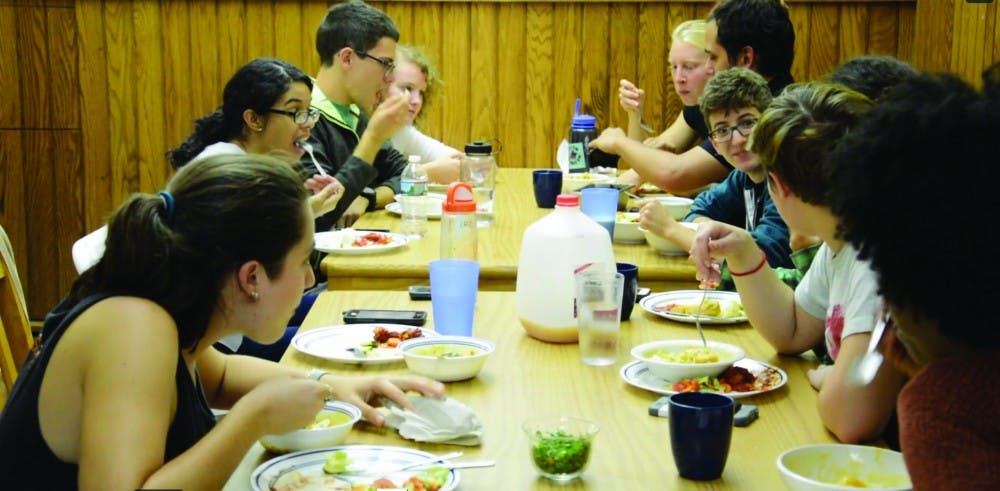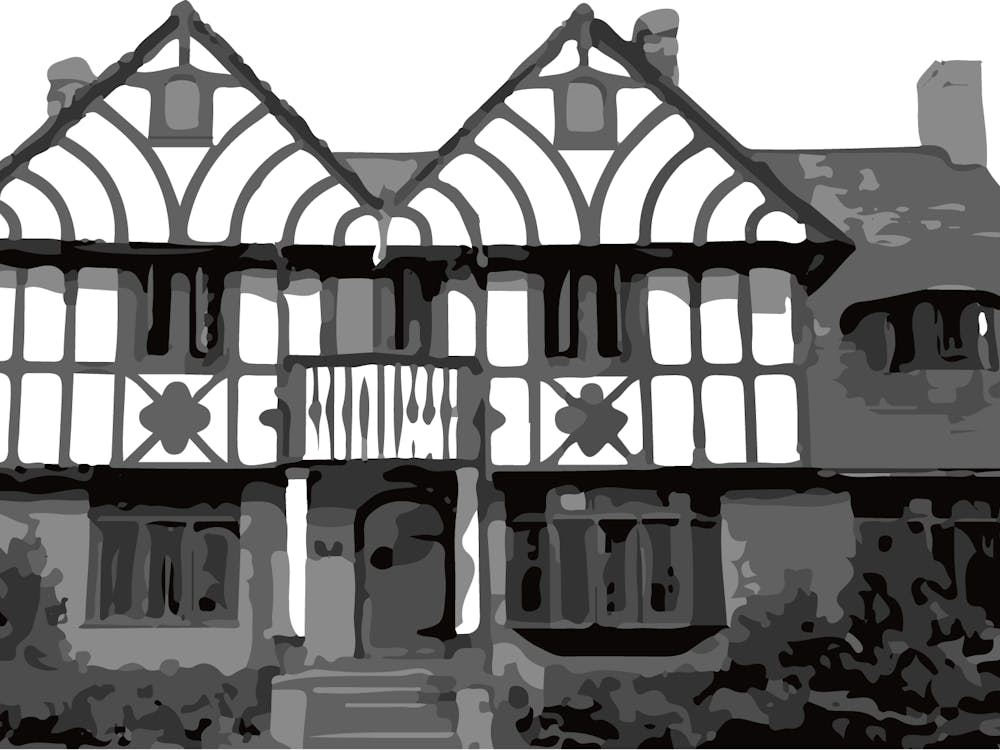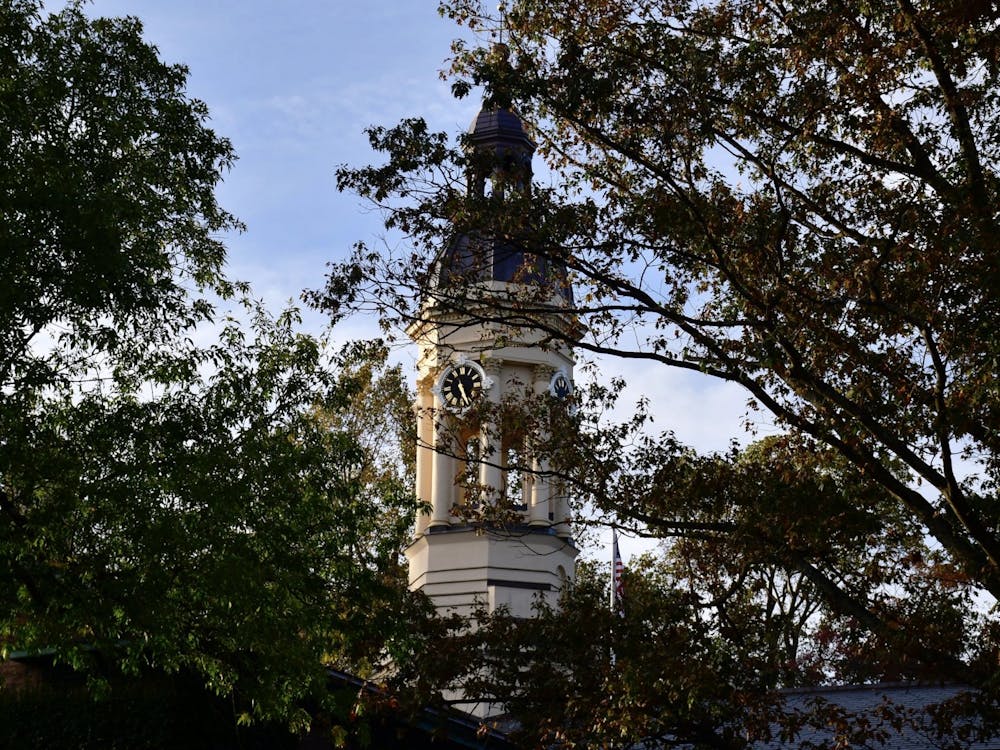“By virtue of the fact that 2D is the only undergraduate co-op on campus, it has been labeled as insular, even strange. But the house’s reputation is the least of its problems,” reads an article published on Feb. 20, 1983, in The Daily Princetonian.
Almost 44 years after this article was published, the undergraduate co-op on Princeton’s campus has expanded to four different operations — 2 Dickinson St., the Brown Food Co-op, the Real Food Co-op, and the International Food Co-op — and is still continuing to grow, with the new Pink House vegetarian co-op set to open next year and ongoing efforts being made to start another co-op. The current eating option only includes five percent of the upperclassmen population on campus, with a total membership of about 140 students. According to press releases from the Interclub Council of the Eating Clubs of Princeton University, about 70 percent of upperclassmen students join eating clubs.
Adrian Tasistro-Hart ’17, a current member of 2D, the oldest co-op on campus, noted that the institution was established as a dining option in 1977, when the kitchen and dining room were first added to the building. According to Tasistro-Hart, the students who established the co-op initially did so because they were tired of the lack of community combined with the low-quality independent cooking.
A Prince article about the history of the co-op, published on Apr. 4, 1996, noted that the members of the house initially wrote a declaration of independence when establishing the co-op. The declaration stated, “Motivated by a desire to be independent without being isolated from people, these students plan to eat and live together in a community atmosphere, a situation lacking not only in independent dining but in Princeton dormitory life in general. The success or failure of the Dickinson project may exert a great influence on the future of independence.”
Alex Gottlieb ’18, who is part of the Real Food Co-op, said that the Real Food Co-op was started in the basement of Edwards Hall in Mathey College in 2012. Gottlieb explained that he joined the club in his sophomore spring because he had had a couple of meals there before, and one of his good friends had told him that there were spots open in the club. “My sophomore year was a tough year for me personally and I was very much looking to find my community on campus,” he said.

Alexandra Aparicio ’18, who currently lives in the Pink House, Forbes’ designated sustainable community, said that while the group is not yet an official co-op, they have been able to use the kitchen for sophomore dinners and special events. She noted that being able to cook has allowed house members to better enjoy the space and form deeper relationships with one another.“Food and the choices we make around eating [are some] of the most impactful things that you can do in your life to become more sustainable,” added Gavin Hall ’18, a current resident of the Pink House. He explained that since the Pink House technically qualified as special interest housing for students committed to living a sustainable lifestyle, the co-op enabled them to truly live out their purpose. “A lot of the stuff we do could in theory by done by a student group without a devoted home, but I think we would miss out the amazing thought process that happens when we’re all together at the same time,” Hall commented.
“It’s been really great for me in terms of having a community as an upperclassmen, somewhere that I can come home to at the end of the day, where I feel supported and among people who share my core values of sustainability,” Aparicio added.

Tasistro-Hart explained that in 2D, decisions about what food to prepare, what to do in the co-op, and what rules apply are all determined during group meetings. “We end up having super-heated debates about really trivial things like, ‘Should we buy almond milk one week?’ The process of talking things out together, and making sure everyone’s voice is heard is a form of expressing autonomy and independence. Even though the decisions we make aren’t that significant, it feels kind of significant.”
Gottlieb commented that being a part of a co-op is not “so much [about] having an eating option as much as knowing that on any given night, if you show up somewhere at 6:30 p.m., you are going to have a dozen friends sitting around a table who will want to hear about your day, and you will want to hear about their days. It just so happens that food is one of the reasons that we’re there.”
While a three-hour cooking shift may seem intimidating to some, Gottlieb said that if one were to consider the grand course of their week, the cooking shift would add up to about 30 minutes of time, which is not unreasonable to ask of a University student. “I haven’t come across anyone for whom cooking seems like a burden, just because I think like me, people just genuinely enjoy cooking, and it is a very welcome break from the rest of the week” he stated.

Gottlieb added, “Joining a co-op was one of the best decisions I made since coming to Princeton.”
Tasistro-Hart, who is in charge of membership for 2D, said that since last fall, he has been having conversations with students from the other co-ops and the administration about providing more co-op options for undergraduates. He noted that the waiting list for 2D is currently at 250 people.
“We recognized at that point that there was a lot of discontent with the availability of independent options,” he added. “The point is that we recognize there is a demand for alternative eating options, and co-ops are an ignored option that really strike a good balance between community and independents.”
The administration has been very receptive to discussions, and everyone is optimistic that there will be a new co-op next fall, Tasistro-Hart explained. However the questions of how the construction will be funded, whether finding a house would be feasible, and how to replicate the process still have to be resolved.
“We’re trying to expand those options in an organized way that is sustainable and reproducible,” Tasistro-Hart noted. “Part of the vision is that co-ops could be part of eating culture.”









